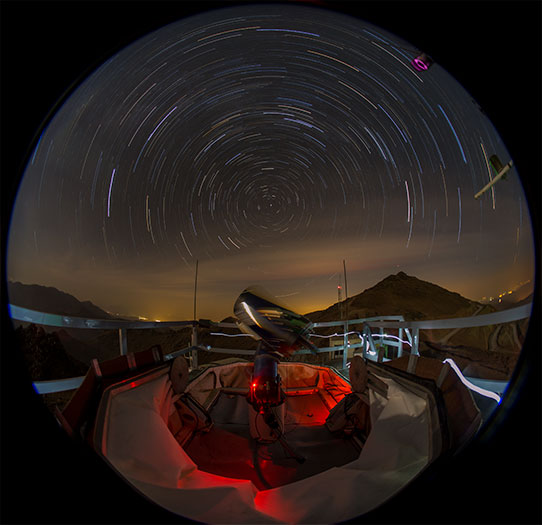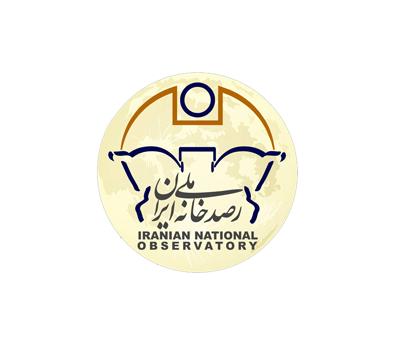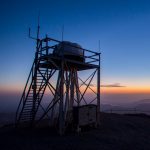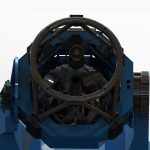Observing Facilities
INO340 Telescope
The telescope optical design is the classical Ritchey‐Chrétien. The primary mirror is meniscus shaped with an aspect ratio of 18.9. The 600 mm secondary mirror reflects the light from the primary mirror and is also controlled by a hexapod positioning system that can move and tilt the secondary mirror in 6 degrees of freedom. The primary mirror will be actively supported either in closed or open loop mode, in the latter case according to predefined look up tables depending on pointing and possibly also by temperature. The focal ratio of the telescope is f/11.24.
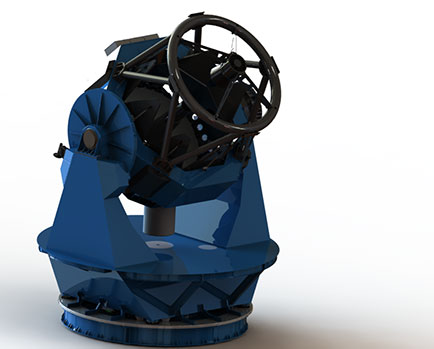
The INO340 telescope will be equipped with an active optic control system to reach the best optical quality. The system will correct all low frequencies and low amplitudes aberrations.
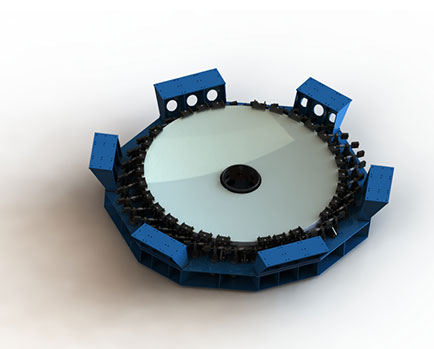
The INO340 telescope mount supports the Primary mirror-Cell assembly, the top unit assembly and adapter-rotator assembly. The telescope structure is designed as an altitude over azimuth (alt-az) mount. This allows the telescope to be very compact and provides direct load paths from the telescope down through the structure to the pier and foundations. The drive motors used to move the telescope in azimuth and elevation will be servo motors with position feedback will be provided by linear tape encoders.
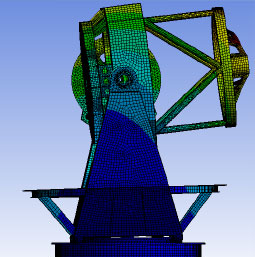
INO340 is a complex system-of-systems. It includes several optical elements, a mechanical structure, a number of electromechanical mechanisms and a control system (INOCS) with an elaborate set of software. The telescope interfaces to several parts of the observatory such as enclosure and instruments. The INOCS shall be divided into systems suitable for managing various required functions, e.g. high-level coordination, telescope control, tilt and active optics shape control of the primary, instruments, dome control, environmental monitoring, building management, safety and etc.
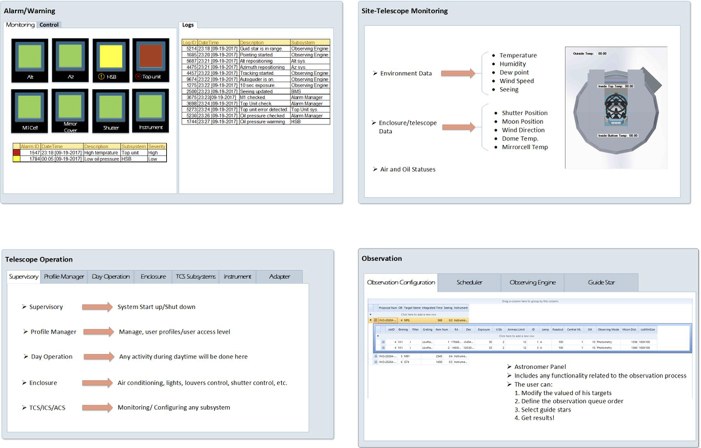
INOLA
The INO Lens Array (INOLA) is a multi-lens array constructed by the INO Technology Development Division (TDD) team to study ultra-low surface brightness systems at visible wavelengths. The array is particularly designed to reveal faint structures by greatly reducing scattered light and internal reflections within its optics. Some of the scientific goals envisioned for the INOLA include observing faint galaxies, stellar halos and substructures, tidal debris around galaxies, comets and minor bodies in the solar system, light echos, intra-cluster light, variable stars and exoplanetary transits. INOLA became operational in 2018 and is now open for proposals.
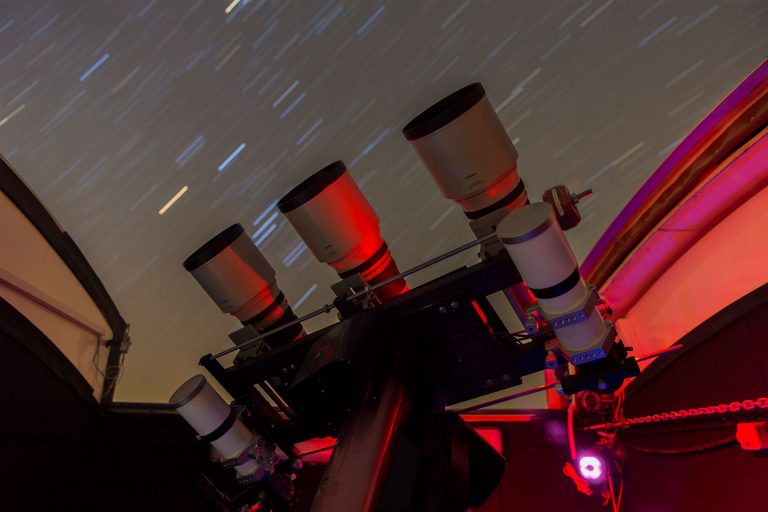
Site Monitoring
The site monitoring station is comprised of three elements; a seeing monitor (Auto DIMM), an all sky camera and a weather station. The seeing monitor uses an automated 12‐inch telescope installed on an equatorial mount equipped with a two-hole mask at its entrance pupil. The telescope is mounted on a high tower. The system is operated automatedly using dedicated software and it controls the telescope’s outdoor conditions. Site monitoring facilities have been installed 500m away from the main peak. Data is sent live to a server in Tehran using a combination of microwave and national optical fiber grid. Data is posted live on the INO website. Live weather and seeing measurements are being performed regularly.
